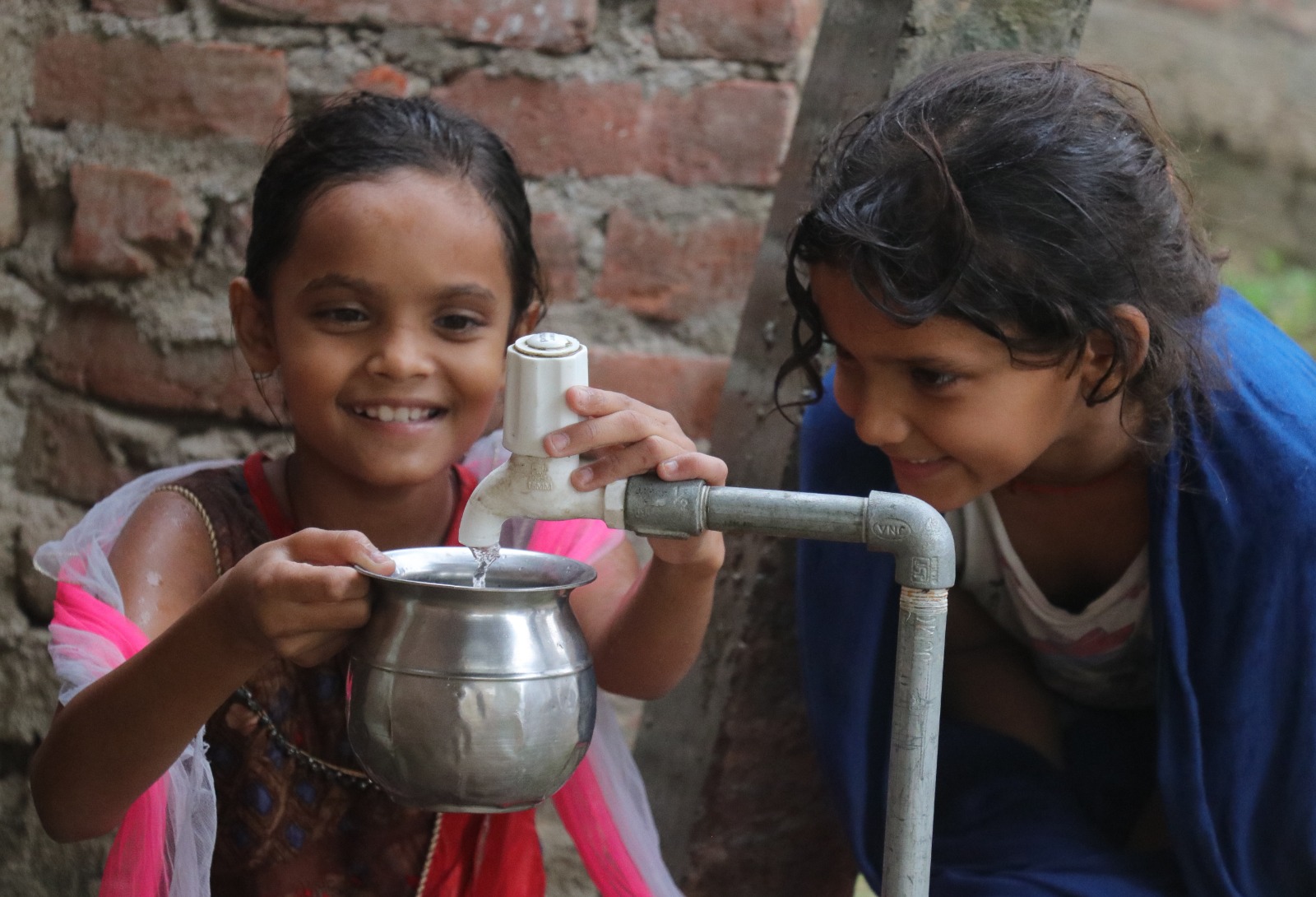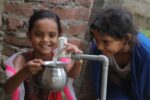The world is speeding through the 21st century, powered by innovation, technology, infrastructure etc. and India too strides along with determination to claim her rightful place, and reach the fruits of development to her every citizen. But away from technology and infrastructure a silent revolution is sweeping through the Indian villages. A revolution not derived by IPOs and Sky Scrappers but a humble turn of tap. A promise that is delivering safe and clean water to the Indian rural Indian households restoring time, health and opportunities inclusive to all. The revolution we are talking about is the Har Ghar Jal.
What is “Har ghar jal“
‘Har Ghar Jal’ is the citizen facing the objective of the ‘Jal Jeevan Mission’. The Jal Jeevan mission was launched in August 2019 by Prime Minister Shri Narendra Modi, with the goal to provide Functional Household Tap Connections (FHTC) to every home. In 2019, only 3.23 crore rural households in India (17% of total) had tap water connection, with most depending on wells, hand pumps, or far-off water sources. By 2025, the Jal Jeevan Mission has shown a remarkable change, with over 15.71 crore rural homes (81.15% of total) now having access to safe tap water, affecting the lives of approximately 80 Crore individuals.
Beyond numbers, the highlight of the mission lies in ‘Antyodaya’, this is not a top-down announcement; it is a bottom-up achievement, powered by lakhs of village women and Pani Samitis ensuring water flows not just through pipes, but through lives.
Journey from carrying water to carrying opportunities
From the time of ancient India, the water chores usually fell onto the shoulders of women; mostly unwilling. They would spend most hours of their day fetching water from far away sources, balancing heavy pots on their heads at the cost of health, opportunities and education.
But the situation has changed to a great extent with the ‘Har Ghar Jal’ initiative. The water accessible at home, saves time and generates opportunities for them to look beyond their household and family. And provide them with safe and healthy living, with a longer life.
The hurdles to a normal life
An infant born in the places with no availability of clean and fresh water, suffers from deadly diseases like Cholera and Jaundice, which are life threatening. Little girls and young women walk miles, several times a day to fetch water for the bare minimum consumption of their households, spending most of their time of the day in the so-called ‘water chores’ leaving no time for education, health and self growth.
In regions facing acute water scarcity, many women ended up with lifelong back problems and neck or shoulder injuries from a very young age. This happened either because they had to carry heavy water pots every day or because they sometimes slipped and fell from hills or cliffs while fetching water.
In several regions of Rajasthan and other parts of India, women were often married off at a very young age primarily to assist their husbands’ households as ‘water labourers.’ The custom of polygamy was also widespread, with men taking multiple wives to ensure sufficient hands for fetching water and managing the family’s daily water requirements.
The dawn of change
But now, the time has changed and so has the fate of most of these women. With the availability of fresh and clean drinking water the fear of ‘water borne’ diseases have decreased to minimum. Young women can now go to schools, instead of ponds, building a good and progressive future for them and their families. Providing a healthy and skilled demographic dividend for India.
Women who spend most of their time doing ‘water chores’ can focus on their health and wellbeing as well as for their family. They too can open small businesses in this spare time with the help of Women Self Help Groups and Mudra loans provided by the government. The agriculture and farm productivity would increase with the availability of more labour force. All of this would not only lead to upliftment of India’s ‘Nari Shakti’ but also support the Indian Economy by increasing the ‘disposable income’ and ‘employment generation’. Out of pocket expenditure of a poor and lower middle class family, on medicines and health too has minimised, again increasing the ‘disposable income’ of a common citizen.
How did all of this change? Through a single scheme, that simply aims at providing safe drinking waters through taps in every house. The ‘Har Ghar Jal’ initiative of Jal Jeevan Mission has transformed lives in ways and sense, we do not realise unless we look at it individually. Suppose if there were no taps (which the Jal Jeevan Mission provided), the women and children would meet the same fate of despair, diseases and economic insecurity. But thankfully, the situation has changed for the better.
A revolution beyond skyscrapers and computers
In the night sky, the stars of development that shine are not just sky scrappers or the super computers, they are the initiatives that impact and change lives on ground. This is what ‘Har Ghar Jal’ under the ‘Jal Jeevan Mission’ has done. It also aligns with the Sustainable Development Goals (SDGs) of good health (SDG 3), quality education (SDG 4), gender equality (SDG 5), clean and safe drinking water (SDG 6), economic growth (SDG 8). And above all our nation’s aim to be the ‘Wellfare State’.
(Author- Maitreyaei Upadhyay (Tweets at @MaitreyaeiU) is public policy, politics and geopolitics enthusiast. She is interested in current and future happenings that concern India as a whole, her polity and international relations.









